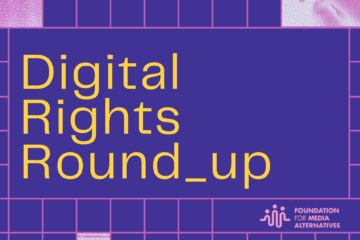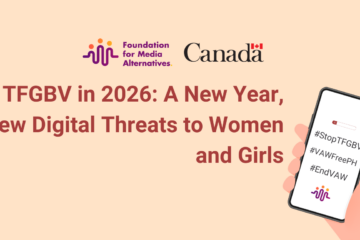APrIGF 2024: Reflections on Multistakeholderism and the Future of the Internet

Last August 2024, I attended the Asia-Pacific Regional Internet Governance Forum in person for the second time. The first time was in 2017, merely a year after I started working on digital rights. The biggest difference is that this year, I went to APrIGF not just as a participant but as part of its Fellowship Program. The circumstances placed me in a rather awkward position: I was not a newcomer in the space, but neither was I a seasoned veteran.
Part of the Fellowship was that all of us fellows were automatically made part of the Drafting Committee. This required a certain level of work from us, of course, but I realized that being involved in the building of the Synthesis Document was a highly effective way for one to fully immerse themself in the sessions and process discussions in a way that highlights the interconnectedness of Internet Governance issues.
That being said, I know how much hard work has gone into the Synthesis Document, so I will not attempt to summarize what transpired at the APrIGF. Instead, I intend to use this blog entry to share my humble and personal reflections throughout the four days of the forum, as well my participation in the Fellowship Program.
Thematic Tracks
The APrIGF sessions were focused and categorized into three main thematic tracks: “Security & Trust,” “Resilience,” and “Ethical Governance of Emerging Technologies.” When the thematic tracks were first announced, I thought three tracks were too few, but I soon realized it was just enough to truly focus and give clear directions to the discussions. The sessions seemed to share a common acknowledgement of the threats that surround the openness, interoperability, and integrity of the Internet. There were multiple discussions on Internet fragmentation; and although the community still hasn’t agreed on a single definition of this term, the sessions were diverse enough to touch on the many faces of fragmentation – from national laws and policies that assert sovereignty but restrict access to certain kinds of content and networks, to the internet shutdowns that have become increasingly common in the Asia-Pacific region, to commercial consolidation driven by the impregnable monopoly of Big Tech platforms. As someone who has been engaging in standards development organizations such as the IETF in the issue of Internet Fragmentation, it was refreshing to hear about fragmentation defined and characterized not in theoretical and hypothetical terms, but based on the actual threats experienced in the Asia-Pacific.
Local Realities, Global Internet
Having also attended the global IGF in 2023, I can’t help but make comparisons between the two, and I believe the biggest difference is really that the APrIGF focuses on concrete local experiences, whereas the global IGF offers a more panoramic view of the Internet Governance landscape. Although it was not part of the main program, one of the most memorable workshops I attended was a side event organized by the Global Digital Inclusion Partnership on Day 0 on “Connected Resilience: Gendered Experiences of Meaningful Connectivity.” The workshop allowed me to take a step back and ask myself, what does meaningful connectivity mean to me and my community? What does connected resilience look like in the particular context of the Philippines and my own experience as a woman? The workshop highlighted the need for digital ecosystems – policies, infrastructure, institutions – that are resilient enough to bounce back from any form of crisis. I was thankful to this workshop for providing me this framing on my first day, because it was this view of resilience that made me appreciate the other discussions throughout the week.
Meaningful Participation
Anyone who ever steps foot in an IGF of any level will surely be familiar with one key term: multistakeholderism. Discussions about the relevance of this approach to Internet Governance is not new, but this year I observed a common line of questioning among participants: Is the multistakeholder model working? Is it enough? It’s not skepticism, per se, but rather a more critical view of this value we hold so dear in the IG space and an intention to do better. Another responsibility given to us as part of the Drafting Committee was attending the Town Hall sessions that were held at the end of each day. These were open-mic sessions that were meant as a space for participants to pose questions, share their reflections and takeaways, and make interventions that they weren’t able to make during the sessions that day. In these Town Hall sessions and in another open-mic forum that was hosted by the Freedom Online Coalition, multiple people pointed out that while it was an honor and privilege to be able to participate in the APrIGF, it was still, ultimately that: a privilege. For the couple thousand of voices we heard throughout the week, there are thousands, millions more that remain unheard, unrepresented, and unconnected. For every panel discussion that was held on how to protect the global Internet, there are other parallel discussions happening in other places (like the UN) making decisions that would endanger those very same values we are trying to uphold. This fact is in no way a failure of the multistakeholder model, but perhaps a reminder of its importance.
At the end of the day, Internet Governance is a never-ending process. It didn’t start at the APrIGF, and it should not end there. Important conversations were sparked during the forum, but the real work began as soon as we stepped out of the NTUH Convention Center and made our respective journeys home.
The views and opinions expressed on this blog is solely that of the author and does not necessarily reflect the views of the author’s employer, company, institution or other associated parties.



0 Comments